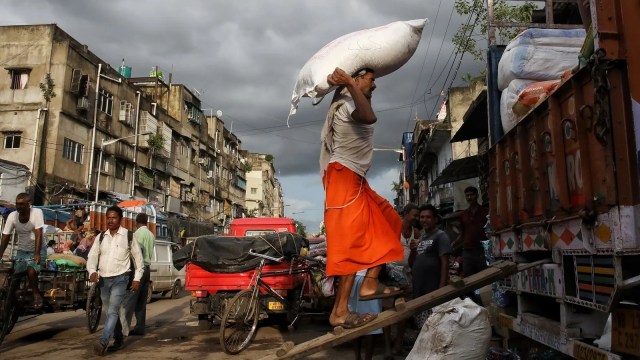India’s economic growth rate is likely to have slowed in the July-September quarter from the previous two quarters as well as the previous year, but there is no significant downside risk to the 6.5-7 per cent growth projection for the ongoing financial year 2024-25, Economic Affairs Secretary Ajay Seth said on Wednesday. Seth also stated that the government is likely to undershoot the budget estimate of Rs 11.11 lakh crore for capital expenditure for FY25.
“We started the year with estimates in the Economic Survey of 6.5-7 per cent (real GDP) growth and I see that we are still very much in that zone. I don’t see any significant downside risk coming to that. What I see is that several of you have been talking about an apparent slowdown. Yes, the numbers in the second quarter do show that some of the products or some of the services may not be at the same level where they were about a year back or even two quarters earlier”.

“But thereafter, if you look at some other indicators, especially, I am looking at that in terms of the e-way bills or the e-invoices in the month of October, they tell a different number. That does not indicate that we have any significant possibility of any downside risk from the 6.5-7 per cent growth which has been estimated at the beginning of the year,” Seth said at the curtain raiser event of the Annual General Meeting of industry body Federation of Indian Chambers of Commerce and Industry (Ficci).
The Indian economy had grown by 6.7 per cent year-over-year in April-June this financial year, the slowest in five quarters. GDP growth was recorded at 7.8 per cent in the January-March quarter, marking the full-year growth for financial year 2023-24 at 8.2 per cent.
Government capex
Without putting an exact number to it, the Economic Affairs Secretary also noted that the government’s capex may see some “undershooting” as against the FY25 budget estimate of Rs 11.11 lakh crore. “This year capex was budgeted at Rs 11.11 lakh crore and there may be some undershooting, but I do expect there will be a significant increase over last year. While some sectors are a bit slow, but on the other hand, few other sectors, there are additional demands coming up. Even last year, it was budgeted for 10 (lakh crore rupees), expenditure was about 95 per cent. I see even this year we should be around the same percentage,” Seth said.
A similar level of 95 per cent utilisation rate as previous fiscal, as stated by Seth, implies capex could turn out to be around Rs 55,555 crore less than the budget estimate of Rs 11.11 lakh crore this financial year. In FY24, the Centre’s capex was Rs 9.48 lakh crore as against the initial budget estimate of Rs 10 lakh crore. This year, the pace of capex has been slow in the backdrop of Lok Sabha elections. As per the latest official data, the Centre’s capex during September was Rs 1.14 lakh crore, down 2.4 per cent from the year-ago period. Cumulatively during April-September, the first half of the financial year, capex was down 15.4 per cent year-on-year to Rs 4.15 lakh crore. To achieve the FY25 budget target of Rs 11.11 lakh crore, capex will have to grow by 52 per cent in H2 FY25.
Inflation
Seth noted that food prices have been a “problem area” as far as inflation is concerned, attributing it largely to extreme continuing rainfall that has continued unusually longer this year. “But, other than the food prices, inflation is not a challenge,” he said. The secretary, however, refused to comment on interest rates, saying that it is a monetary policy action.
Story continues below this ad
Retail inflation rate surged to a 14-month high of 6.21 per cent in October with a sharp rise in prices of food items, especially fruits, vegetables, meat and fish, and oils and fats. Food inflation also shot up to a double-digit level of 10.87 per cent in October, a 15-month high.
US-China impact
Seth also commented on the recent change of leadership in the US, with the new presidency going to Donald Trump, saying that India will have to work around the outcome and “maximise opportunities”. He also said that India will have to keep a close watch on how the Chinese economy behaves going ahead and if their demand does not increase as in the past, it could pose a challenge for India.
“The largest economy has chosen its leader (Trump), and it is for us to work around and see that how do we maximise opportunities for us. As far as geopolitics is concerned, it is not an easy place, but more than what happens — the stance, economic issues or economic policies being adopted by the largest economy, what happens in other economies, especially where there are wars or war-like situations. Also, for the Chinese economy, going forward how it behaves. Those would be the larger questions for us to watch around or to be aware that what it is going to be. There’s a concern that China has issues on manufacturing capacities, and if their demand is not increasing to the extent it has been in the past, there will be challenges for all countries, including India,” he said.

































